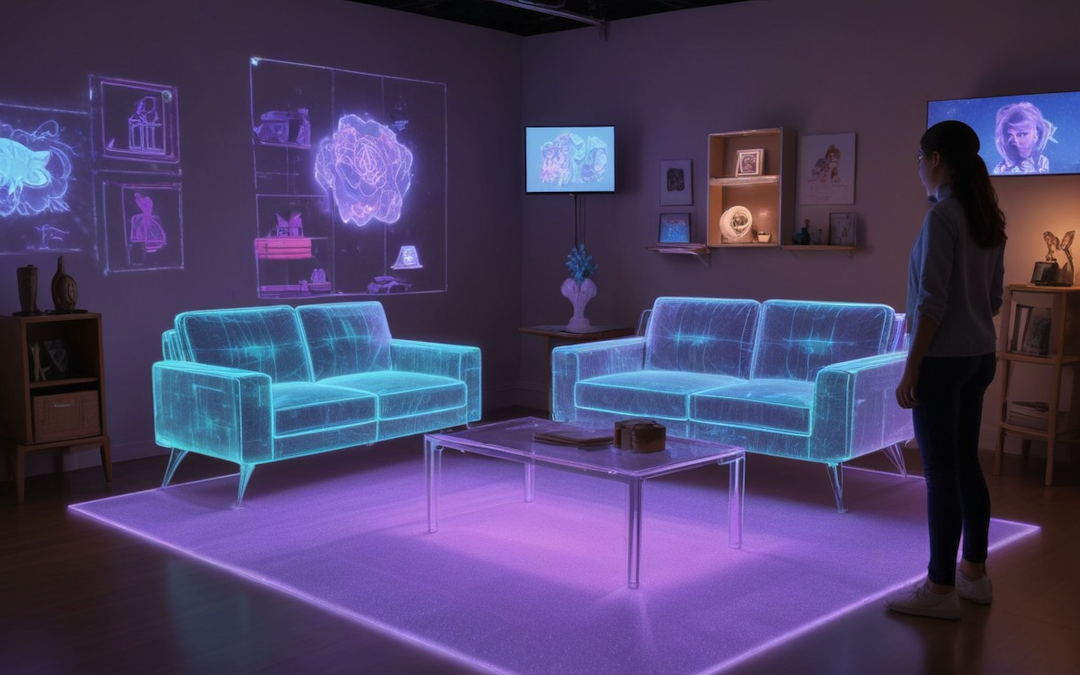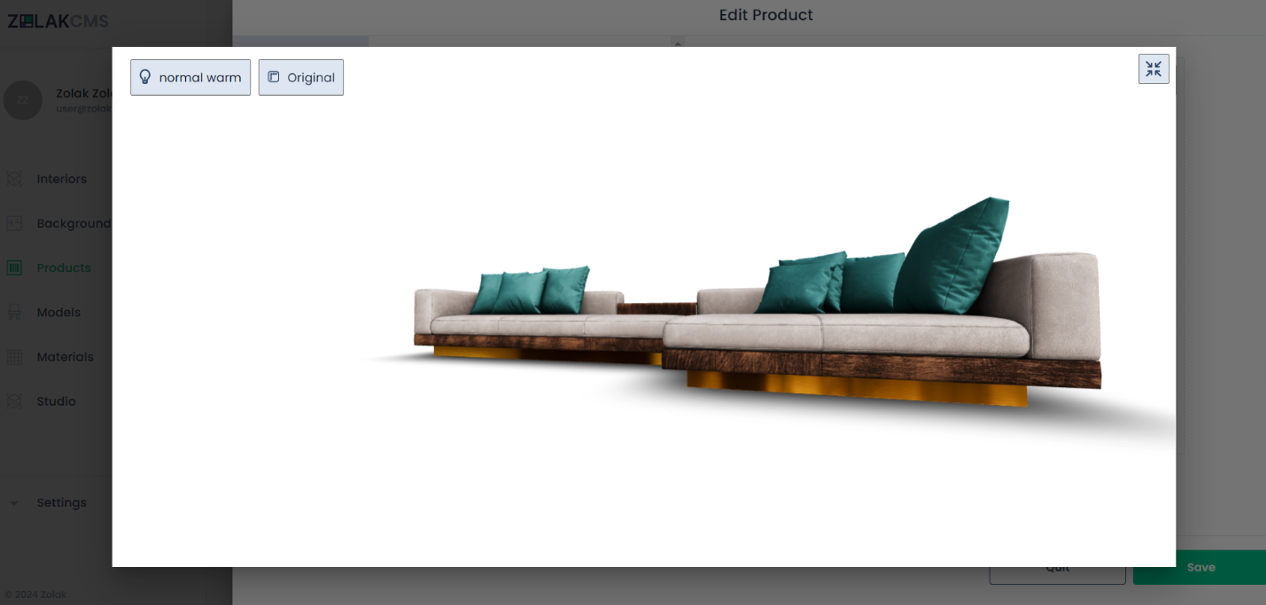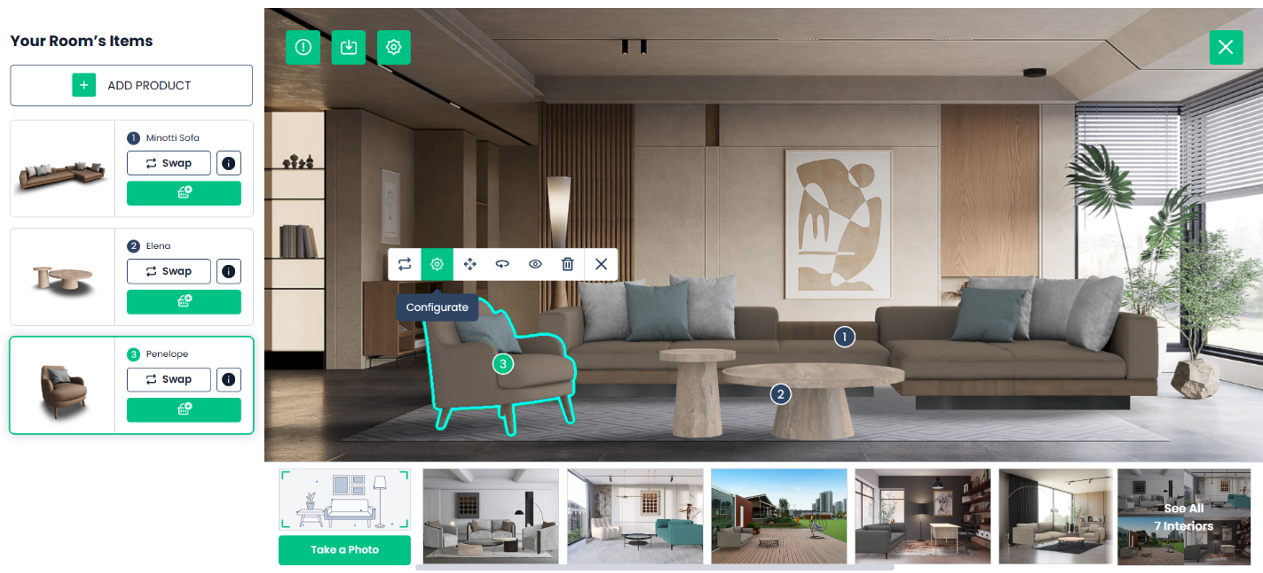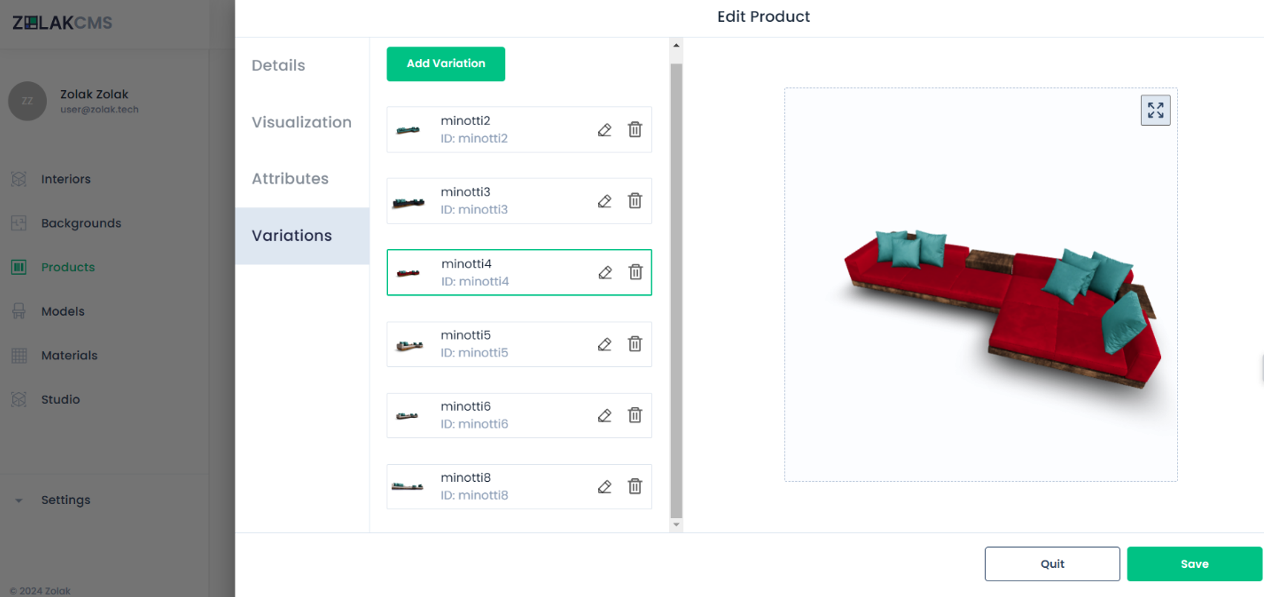
E-commerce websites are constantly striving to offer the best visual product representation, and the secret to success lies in advanced-quality 3D models. Simply put, the better the 3D furniture visualization, the more likely customers are to stay and buy. Poor-quality visuals can quickly drive them away. Smooth 3D product modeling is a powerful strategy to boost sales.

Did you know that 65% of people retain visual information more efficiently when products look aesthetically pleasing? That's a compelling reason to invest in high-quality 3D visualization.
Powering Your Business with 3D Furniture Visualization
Integrating 3D furniture visualization technology into an e-commerce website can transform the customer experience. Here’s how:
- Interactive furniture configurations. 3D visualization allows customers to personalize their purchases, leading to increased engagement and satisfaction. For example, they can change colors, sizes, and features in real-time.
- Product clarity. An immersive 3D approach helps customers understand product features more clearly, reducing returns by providing a precise depiction of the final product.
- Innovative marketing. Leveraging 3D visualization opens up new possibilities for dynamic marketing, boosting sales and brand loyalty in the digital landscape.
However, integrating furniture visualization is not without its challenges. Let’s delve into the technical aspects and best practices for a smooth integration process.
Technical Expertise in Furniture Visualization Integration

- Utilize 3D product models. Start by creating detailed 3D models of your products using specialized software or by outsourcing to 3D modeling experts. These models serve as the foundation for all visualization efforts.
- Choose the right 3D visualization platforms. Select the right tools or platforms that support 3D visualization and ensure they are compatible with your e-commerce website. Compatibility is crucial for functionality and performance.
- Linking 3D visualization with ecommerce. Seamlessly integrate the chosen 3D visualization tools with your e-commerce site using APIs or plugins provided by the platforms. This ensures smooth functionality.
- Configuring a dynamic user experience. Implement configurations that allow customers to interact with the 3D models. Features like rotating, zooming, and viewing from different angles enhance the visual experience.
- Optimizing 3D models for web. Ensure your 3D models and visualization tools are optimized for web performance. This means smooth loading and responsiveness across various devices and internet speeds.
- Managing 3D data with backend systems. Set up a robust backend management system to handle the storage, retrieval, and display of 3D models within your e-commerce site. Efficient data management is crucial.
- Customizing products in real-time. Provide customers with customization options. For instance, they should be able to personalize aspects of the product, like color, size, and features, in real-time using the 3D visualization tools.
- Integrating 3D models into product pages. Seamlessly integrate the 3D models into your product pages. This allows customers to visualize products in detail before making purchasing decisions.
- Testing and refining 3D visualizations. Conduct user testing to gather feedback on the 3D visualization experience. Make necessary adjustments and improvements based on customer preferences and usability.
- Ongoing maintenance. Regulary update and maintain the 3D visualization tools. Keep up with technological advancements and address any issues or bugs promptly.
The Development Process with 3D Modeling

Creating 3D models for product visualization involves several steps:
- Start with the initial concept and design.
- Use specialized software to create detailed 3D models.
- Designers and engineers work together to ensure accuracy and feasibility.
- Continuous feedback loops help refine the models for better realism and functionality.
- Test the models to ensure compatibility and performance across various platforms and devices.
- Keep the models dynamic and aligned with evolving market demands through regular updates and optimizations.
Conclusion
Integrating 3D models into e-commerce websites for enhanced furniture visualization offers numerous benefits. It improves customer engagement, boosts sales, and reduces returns by providing a more accurate representation of products. This leads to increased consumer trust and satisfaction. Moreover, seamless integration with ERP systems can streamline inventory management and order processing, optimizing the overall efficiency of e-commerce operations. By enhancing the shopping experience, businesses can position themselves for long-term success in the competitive digital marketplace.
Furniture retailers, manufacturers, B2B sellers, and real estate professionals can create immersive 3D showrooms with Zolak furniture configurator directly on their websites. This provides an inspiring and interactive way for shoppers to visualize, configure, and buy complete furniture sets or see how a particular room will look when furnished.
Share this post
Leave a comment
All comments are moderated. Spammy and bot submitted comments are deleted. Please submit the comments that are helpful to others, and we'll approve your comments. A comment that includes outbound link will only be approved if the content is relevant to the topic, and has some value to our readers.

Comments (0)
No comment